Russia’s troop deployment around the boarders of Ukraine has culminated into an all-out war that has been in the planning for perhaps since the fall of the Soviet Union. Russian troops close in on Kyiv, threatening a city of nearly 3 million people as Russia’s war against Ukraine extends into its second day.
In the early morning hours on Friday, Russian airstrikes targeted Kyiv as Russian forces began entering the capital. Ukrainian officials called on residents to “make Molotov cocktails,” to defend against the invasion. United States government officials have warned that Kyiv may fall soon, as Moscow moves into Kyiv with the goal of regime change.
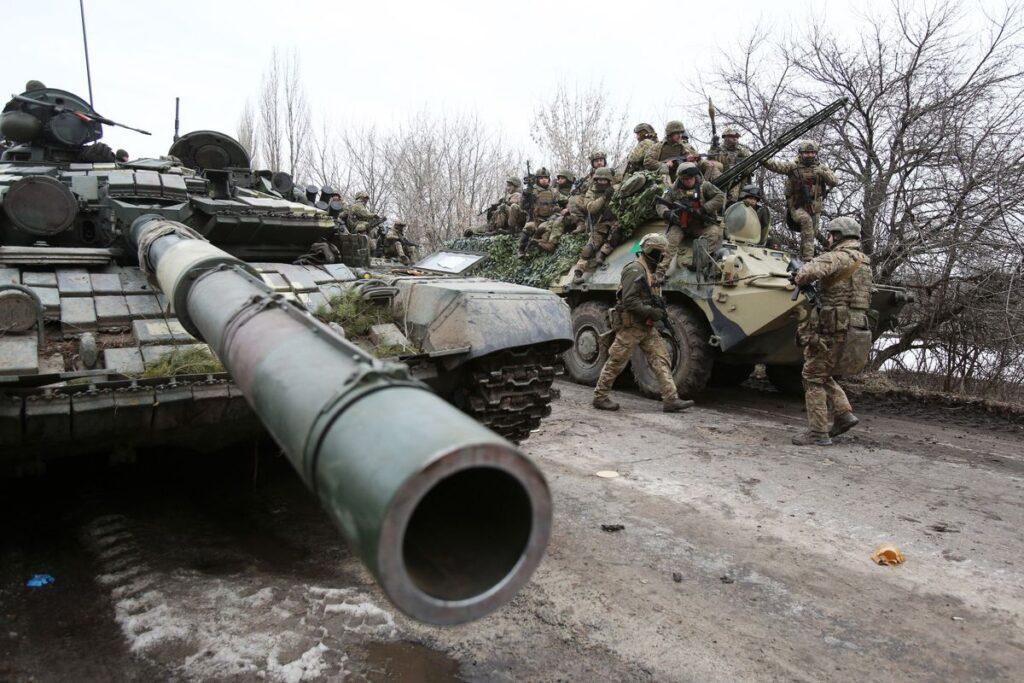
Ukrainian President Volodymyr Zelensky, speaking earlier on Thursday, said Ukraine was alone in defending itself. “Who else wants to fight with us?” he said. “Honestly, I don’t see anyone.” He continued to call on Europe, and the West, to impose harsher penalties on Russia, and told Moscow that Ukraine was ready for negotiations to “stop people from dying.”
Russian Foreign Minister Sergei Lavrov said that Russia would not negotiate a settlement unless Ukraine puts down arms, setting up the possibility of a bloody battle for Ukraine’s capital city.
After months of threats, Russia is now waging a full-out war on Ukraine. It began in the early morning hours of Thursday, local time, when Russian President Vladimir Putin announced he was launching a “special military operation” in Ukraine, a move that was followed up by reports of explosions around cities, including Kharkiv in eastern Ukraine and the capital Kyiv.
The Ukrainian foreign minister confirmed soon after that “Putin has just launched a full-scale invasion of Ukraine. Peaceful Ukrainian cities are under strike.” By the afternoon in Ukraine, Russian troops and tanks had entered the country on three fronts. According to the Pentagon, Russia launched more than 100 missiles into Ukraine, an opening salvo that defense officials said may be leading up to full-on effort to take the capital of Kyiv. At least 137 Ukrainians have been killed so far, Zelensky said Thursday.
Putin’s attempt to redraw the map of Europe could lead to the most devastating conflict on the continent since World War II. It could cost thousands of civilian lives and create hundreds of thousands of refugees fleeing the violence in Ukraine. About 100,000 Ukrainians have fled so far, according to a United Nations estimate.
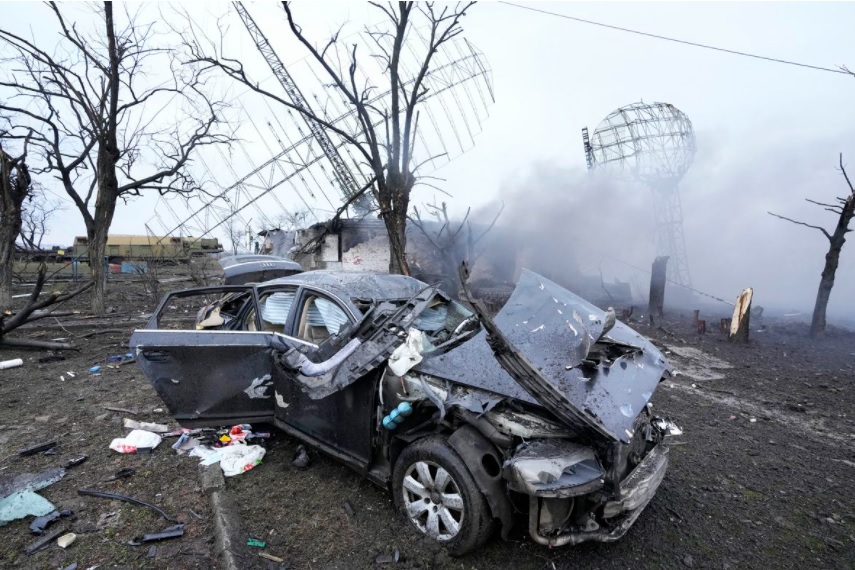
Putin’s announcement came while the United Nations Security Council held a special session in New York on the Ukraine crisis, and bombing began shortly thereafter, according to news reports. In his address, Putin claimed “to defend people who for eight years are suffering persecution and genocide by the Kyiv regime,” a reference to a false claim about the government in Ukraine. Putin claimed that the Russian military seeks “demilitarization and denazification” but not occupation. He demanded Ukraine lay down its weapons or be “responsible for bloodshed.”
The tension over Ukraine has been building for months but escalated quickly this week when, on Monday, Putin delivered an hour-long combative speech that essentially denied Ukrainian statehood. He recognized the independence of two breakaway regions in eastern Ukraine where Moscow has backed a separatist rebellion since 2014 and sent so-called peacekeeping forces into the region. As experts said, that was likely just the beginning, setting the stage for a much larger conflict.
Putin’s escalation comes after the United States warned, again and again, that a larger invasion by Putin was imminent, and after the US and its European allies imposed significant — but far from all-encompassing — sanctions on Moscow. On Thursday, the US imposed the harshest penalties yet on Russia, including on the country’s largest banks.
“President Putin has chosen a premeditated war that will bring a catastrophic loss of life and human suffering,” President Joe Biden said in a statement Wednesday, soon after Russia began its strike. “Russia alone is responsible for the death and destruction this attack will bring, and the United States and its Allies and partners will respond in a united and decisive way. The world will hold Russia accountable.” Secretary of State Antony Blinken told ABC News that he’s “convinced” Putin is attempting to overthrow the Ukrainian government.
The United States imposed the toughest financial sanctions ever on Russia, and other allies joined them in putting harsh penalties on Russia. On Friday, the European Union said it would directly sanction Putin and Lavrov.
But this is all unlikely to stop Russia from waging its campaign in Ukraine, leaving Ukraine — and the world — is in a perilous and unpredictable moment.
Hours before Putin’s announcement of an invasion, Ukrainian President Volodymyr Zelensky delivered an impassioned speech against war, one directed to a Russian audience, as a final plea: “War takes away guarantees for everyone,” he said. “No one will have any kind of guarantees of security. And who will suffer from that the most? People.”
Ukraine is under siege
We are still learning the extent of Putin’s bombardment as his war unfolds. As of Friday, Russian troops had reportedly entered the outskirts of Kyiv after hours of Russian airstrikes. US officials have warned Kyiv may soon fall — with little clarity about what may come next.
Ukrainian leaders believe political assassinations appear to be a real possibility. “According to the available intelligence, the enemy marked me as a target No. 1 and my family as the target No. 2,” said Zelensky, speaking in a T-shirt on Thursday night.
Reports of fighting in the city of Kharkiv, in the east, and in other parts of Ukraine continued on Friday.
In the early hours of the offensive, Russians had reportedly entered Ukraine from the north, south, and east, “assaulting by land, sea and air,” according to Reuters. Ukrainians are fleeing major cities, and residents are taking shelter underground, in subways.
Putin has just launched a full-scale invasion of Ukraine. Peaceful Ukrainian cities are under strikes. This is a war of aggression. Ukraine will defend itself and will win. The world can and must stop Putin. The time to act is now.
— Dmytro Kuleba (@DmytroKuleba) February 24, 2022
Russia seized the decommissioned Chernobyl nuclear plant 80 miles north of the Ukrainian capital, the site of the 1986 nuclear disaster. The International Atomic Energy Agency is monitoring developments there “with grave concern.”
At Antonov International Airport, a global cargo hub located about 16 miles outside of Kyiv, Russian paratroops and Ukrainian forces engaged in a three-hour firefight. The Ukrainian Ministry of Internal Affairs says the military has regained control. The Pentagon estimates that Russia has fired more than 160 ballistic missiles into Ukraine.
Why is Putin attacking Ukraine? He told us.
“This is a deliberate, cold-blooded, and long-planned invasion. Russia is using force to try to rewrite history,” NATO Secretary General Jens Stoltenberg told reporters. The alliance met today to plan for ways to strengthen the defense of neighboring NATO countries Estonia, Lithuania, Latvia, and Poland.
Russia has remained defiant and insists that is not actually launching a full-scale war.
The roots of the current crisis grew from the breakup of the Soviet Union
Over the last few months, Putin had amassed close to 190,000 troops near the Ukrainian border, a force that military analysts said was clearly prepared and ready to launch an invasion.
Such an invasion would — and does — contravene security agreements the Soviet Union made upon its breakup in the early ’90s. At the time, Ukraine, a former Soviet republic, had the third-largest atomic arsenal in the world. The US and Russia worked with Ukraine to denuclearize the country, and in a series of diplomatic agreements, Kyiv gave its hundreds of nuclear warheads back to Russia in exchange for security assurances that protected it from a potential Russian attack.
But the very premise of a post-Soviet Europe is also helping to fuel today’s conflict. Putin has been fixated on reclaiming some semblance of empire, lost with the fall of the Soviet Union. Ukraine is central to this vision. Putin has said Ukrainians and Russians “were one people — a single whole,” or at least would be if not for the meddling from outside forces (as in, the West) that has created a “wall” between the two.
Last year, Russia presented the US with a list of demands, some of which were nonstarters for the United States and its allies in the North Atlantic Treaty Organization (NATO). Putin demanded that NATO stop its eastward expansion and deny membership to Ukraine, and also made other demands for “security guarantees” around NATO.
The prospect of Ukraine and Georgia joining NATO has antagonized Putin at least since President George W. Bush expressed support for the idea in 2008. “That was a real mistake,” Steven Pifer, who from 1998 to 2000 was ambassador to Ukraine under President Bill Clinton, told Vox in January. “It drove the Russians nuts. It created expectations in Ukraine and Georgia, which then were never met. And so that just made that whole issue of enlargement a complicated one.”
Ukraine is the fourth-largest recipient of military funding from the US, and the intelligence cooperation between the two countries has deepened in response to threats from Russia. But Ukraine isn’t joining NATO in the near future, and Biden has said as much. Still, Moscow’s demand was largely seen as a non-starter by the West, as NATO’s open-door policy says sovereign countries can choose their own security alliances.
Though Putin has continued to tout the threat of NATO, his speech on Monday showed that his obsession with Ukraine goes far beyond that. He does not see the government in Ukraine as legitimate.
“Ukraine is not just a neighboring country for us. It is an inalienable part of our own history, culture and spiritual space,” he said, per the Kremlin’s official translation. “Since time immemorial, the people living in the south-west of what has historically been Russian land have called themselves Russians.”
The two countries do have historical and cultural ties, but as Vox’s Zack Beauchamp explained, Putin’s “basic claim — that there is no historical Ukrainian nation worthy of present-day sovereignty — is demonstrably false.”
As experts noted, it is difficult to square Putin’s speech — plus a 2021 essay he penned, and other statements he’s made — with any sort of realistic diplomatic outcome to avert conflict. It was, essentially, a confession that this wasn’t really about NATO, said Dan Baer, the acting director of the Europe Program at the Carnegie Endowment for International Peace and a former ambassador to the Organization for Security and Cooperation in Europe. “It was about that he doesn’t think Ukraine has a right to exist as a free country,” he said before Putin’s escalation Wednesday night.
This is the culmination of eight years of tensions
This isn’t the first time Russia has attacked Ukraine. In 2014, Russia annexed the Crimean Peninsula and invaded eastern Ukraine and backed Russia separatists in the eastern Donbas region. That conflict has killed more than 14,000 people to date.
Russia’s assault grew out of mass protests in Ukraine that toppled the country’s pro-Russian President Viktor Yanukovych, which began over his abandonment of a trade agreement with the European Union. US diplomats visited the demonstrations, in symbolic gestures that further agitated Putin.
President Barack Obama, hesitant to escalate tensions with Russia any further, was slow to mobilize a diplomatic response in Europe and did not immediately provide Ukrainians with offensive weapons.
“A lot of us were really appalled that not more was done for the violation of that [post-Soviet] agreement,” said Ian Kelly, a career diplomat who served as ambassador to Georgia from 2015 to 2018. “It just basically showed that if you have nuclear weapons” — as Russia does — “you’re inoculated against strong measures by the international community.”
Since then, corruption has persisted in the Ukrainian government, and the country ranks in the bottom third of the watchdog group Transparency International’s index.
Ukraine’s far-right presence has grown and become somewhat normalized, and there are government-aligned fascist militias in the country. But Moscow has drawn out those issues to advance false claims about genocide and other attacks on civilians as a way to legitimize the separatist movement in eastern Ukraine and to create a pretext for invasion. In his prerecorded speech shared on the eve of the bombardment of Ukraine, Putin said he sought the “de-nazifacation” of Ukraine.
To be clear: The Ukrainian government is not a Nazi regime and has not been co-opted by the far right. Zelensky is Jewish; he speaks proudly of how his Jewish grandfather fought against Hitler’s army.
Yet, days earlier, Putin used these sorts of claims as part of his explanation for recognizing as independent the so-called Luhansk People’s Republic and the Donetsk People’s Republic, the two territories in eastern Ukraine where he has backed separatists since 2014. “Announcing the decisions taken today, I am confident in the support of the citizens of Russia. Of all the patriotic forces of the country,” Putin said before moving troops into the regions for “peacekeeping” purposes.
At the time, most experts Vox spoke to said that looked like the beginning, not the end, of Russia’s incursion into Ukraine.
“In Russia, [it] provides the political-legal basis for the formal introduction of Russian forces, which they’ve already decided to do,” Michael Kofman, research director in the Russia studies program at CNA, a research organization in Arlington, Virginia, said at the time. “Secondarily, it provides the legal local basis for Russian use force in defense of these independent Republic’s Russians citizens there. It’s basically political theater.”
It set “the stage for the next steps,” he added. Wednesday, those next steps became clear.
How the rest of the world is responding
The United States and its allies around the world have condemned Russia’s invasion on Ukraine. Germany’s Chancellor Olaf Scholz called it a “dark day for Europe.”
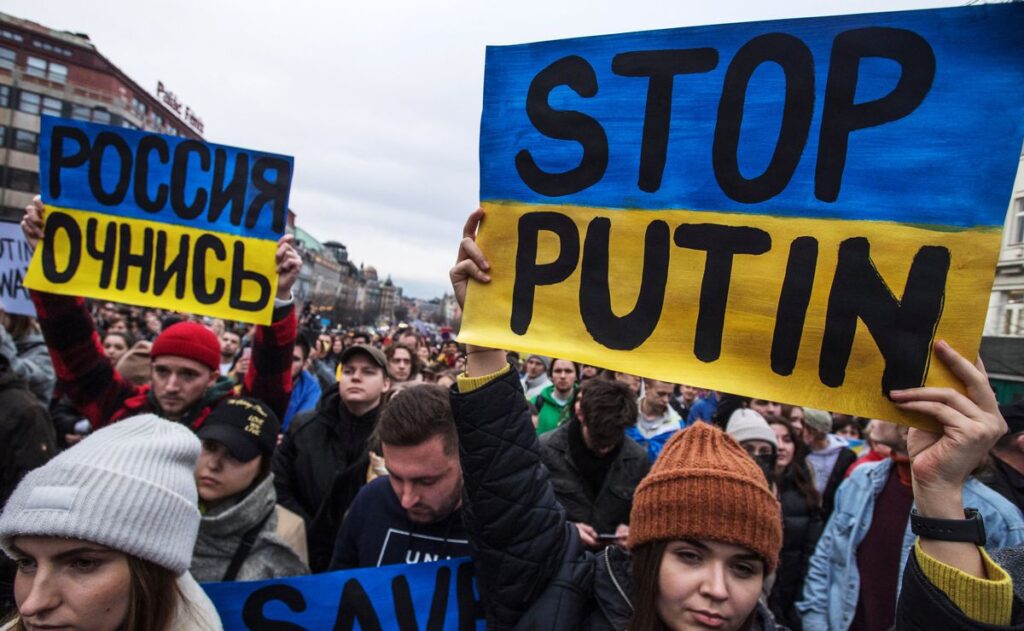
“The events of last night mark a turning point in the history of Europe,” said French President Emmanuel Macron.
All leaders have vowed consequences for Russia. As President Biden said: “The world will hold Russia accountable.”
Biden announced Thursday afternoon that the United States will impose sanctions on Russian financial institutions, including cutting off Russia’s largest banks from the US financial system, and on Russian elites in President Vladimir Putin’s inner circle. America will also implement export controls on certain technologies. Along with penalties from the United Kingdom and Europe, these are the “massive” penalties the West had been warning Putin about.
The United States has said it will not involve troops in any Ukrainian conflict, though the US has shored up its presence on NATO’s eastern flank. On Thursday, the Pentagon said it would send 7,000 additional troops to Germany. Biden had previously said that the US will continue to provide defensive support for Ukraine, and some are calling for the US and its partners to provide more lethal aid to the largely outmatched Ukrainian army.
How to punish Russia for Ukraine
Russia largely knows that the US and its partners to not want to commit themselves military, and, early Thursday as he launched his invasion, he offered an ominous warning as he touted Russia’s nuclear arsenal: “There should be no doubt that any potential aggressor will face defeat and ominous consequences should it directly attack our country.”
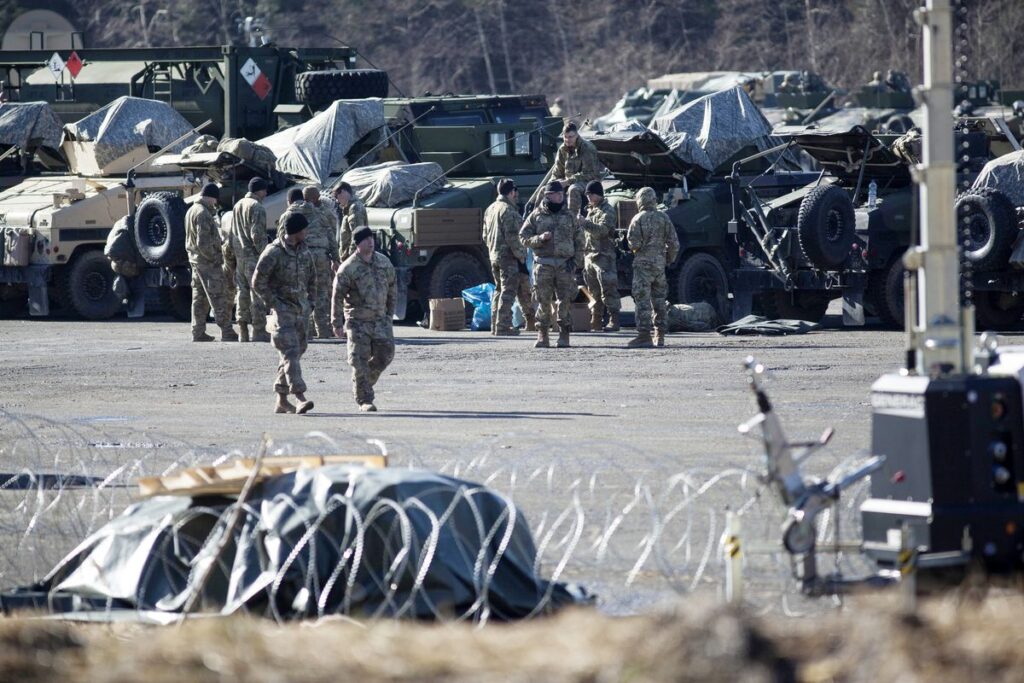
NATO has vowed to protect its members from any Russian aggression. Experts said NATO also had other options, including activating the NATO Response Force, a 50,000-troop unit modernized after the 2014 Crimea invasion.
Yet these are largely defensive measures — which means most of the punishment against Russia will come in the form of sanctions. Thursday’s announced sanctions didn’t include some of the most dramatic options, like cutting Russia off from Swift, the electronic messaging service that allows entities to communicate about global financial transactions and targeting Russia’s energy sector. But the penalties are still some of the harshest sanctions ever directed at Russia or a major power like it. That will come with potential costs to the global economy, and especially to Europe and the United States. The price of oil spiked to more than $100 per barrel on Thursday before coming back down.
“This is going to impose severe cost on the Russian economy, both immediately and over time,” Biden said while announcing the sanctions. “We have purposefully designed these sanctions to maximize a long-term impact on Russia and to minimize the impact on the United States and our allies.”
Prepare for higher gas prices thanks to Russia — and more inflation
The prospects of a settlement with Russia are impossible to contemplate as bombs are falling on Ukraine, but the US and its allies are going to have to do careful diplomacy to isolate and put pressure on Russia in the long term. The US and its allies are also likely going to have to decide how much they want, or can, support Ukraine as it tries to battle Russia.
“The real question, I think, is going to come down to what extent the West can and will try to support and supply a long-term insurgency against Russia,” said Paul D’Anieri, an expert on Eastern European and post-Soviet politics at the University of California Riverside. “And what level of success does Russia have in fighting back against? Unfortunately, it seems like the best strategy for peace right now is when enough Russians die, that the Russians decide it’s not worth it anymore.”
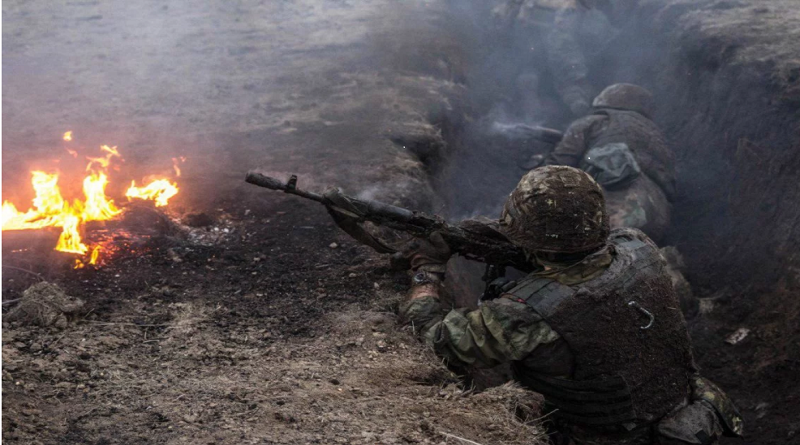
COMMENTS